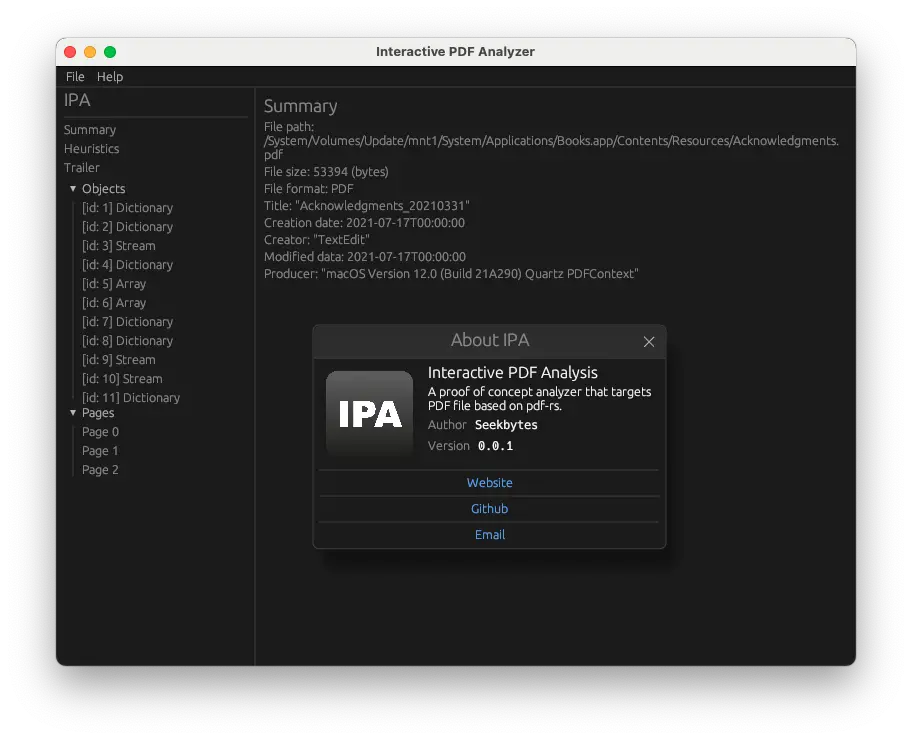
PDF files are a staple in today’s digital world, used for everything from business documents to user manuals. However, like any widely adopted format, PDFs can be exploited to carry malicious payloads, making them a frequent target in cyberattacks. This is where Interactive PDF Analysis (IPA) comes in—a powerful, open-source tool designed to help security analysts delve into the hidden structure of PDF files and uncover potential threats.
PDFs are often used as a vehicle for malicious content, whether through exploiting vulnerabilities in PDF viewers or acting as phishing tools in social engineering attacks. Malicious actors embed harmful scripts or links within the seemingly harmless structure of a PDF, allowing them to bypass basic security filters. With IPA, analysts can break down the inner workings of these files to detect suspicious elements and extract critical data for further investigation.
Key Functionalities of IPA
- Metadata Extraction: Retrieve critical details such as the creator, creation, and modification dates, and other pertinent information embedded within the PDF.
- Structure Analysis: Scrutinize the constituent objects (text, images, fonts) and pages within the PDF, gaining a deeper understanding of their interrelationships and layout.
- Reference Visualization: Observe the intricate connections between various elements within the PDF, potentially revealing hidden malicious intent.
- Raw Data Extraction: Isolate and preserve the underlying binary content of the PDF for further examination using specialized tools.
- Corrupted File Analysis: Attempt to recover valuable data even from damaged or partially compromised PDFs.
- Standalone Operation: Functions seamlessly without the need for supplementary software or libraries.
Current Limitations of IPA
While IPA presents a robust solution, it is essential to acknowledge its present constraints:
- Limited Heuristics: The current version operates with a restricted set of heuristics for threat detection.
- No Support for Encrypted PDFs: Direct handling of encrypted PDFs is not yet supported, although this functionality is slated for future implementation.
- Compatibility Issues: Certain PDFs may prove unparsable due to stringent requirements imposed by the underlying library.
- Limited Native Viewing: Some object types, such as graphical components and color schemes, might not be rendered natively within the tool.
The Significance of IPA
IPA addresses a crucial void in the realm of PDF security analysis. Its open-source nature coupled with its extensive capabilities position it as an indispensable tool for researchers, security analysts, and any professional concerned with potential threats embedded within PDF files. By unraveling the structure and content of PDFs, one can proactively safeguard themselves and their organization against cyberattacks.
Embarking on your IPA Journey
For those prepared to take charge of their PDF security, IPA is an excellent starting point. Available on Github, its open-source ethos encourages contributions to its development or customization tailored to individual needs.